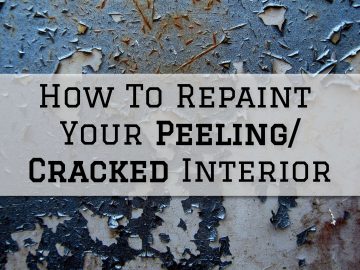Guide To Choosing A Paint Color For Your Guest Room in Richmond, MI
In any painting project, choosing a paint color is one of the most important decisions that you would have to make – and your guest room painting project is not an exception to this.
There are several factors that go into your decision to ensure that you end up with the best possible choice.
So, if you’re about to go to the paint store to shop for paint, here’s something you might want to read on the way!
Here’s a Guide To Choosing A Paint Color For Your Guest Room.
1. Consider the Purpose of the Guest Room
In choosing a paint color for your guest room, one of the first things you should consider would be the purpose of your guest room.
While guest rooms are typically used as bedrooms for your guests, they could also double as a space where your guests could engage in some form of activity and bond with you.
Understanding the room’s purpose will help you choose a paint color that complements its intended use.
For a versatile guest room that serves multiple functions, consider neutral colors like soft grays, muted blues, or warm taupes.
These shades provide a calm and adaptable backdrop that can accommodate various activities while remaining inviting to guests.
On the other hand, if your guest room is a dedicated space for guests to sleep and unwind, you have more freedom to experiment with bolder colors.
Rich jewel tones like deep blues, emerald greens, or plum purples can add a touch of luxury and sophistication to the room, making it feel like a cozy retreat.
2. Look At The Lighting In The Area
The lighting present in your guest room space is also an important factor to consider in deciding on a paint color to use for your guest room since this will have a significant effect on how your paint color will eventually look once painted there.
Depending on the lighting present, your coat of paint can end up in varying appearances – which can cause a difference between your expected paint color and how it eventually appeared.
So, to be certain of how your paint color will look, check paint samples in your guest room, where they will be lit under the lighting present in the space, and you can see how it might affect your possible color choices.
This way, you also get to make an informed decision and reduce any risk of regrettable decisions.
3. Harmonize with Existing Decor and Furnishings
Another important factor to consider in deciding on a paint color for your guest room would be the existing colors and elements present in the space – and this can be seen with the decor and furnishings present in the space.
To do this, take note of the dominant colors and elements present in the space, which can be seen through the furniture, bedding, and accessories present in the room.
If you have furniture and decor in a particular color scheme, select a paint color that complements or contrasts with these elements in a pleasing way.
4. Test Paint Samples
Underestimating the effect of testing paint samples prior to committing to a final decision is a fatal mistake to make.
Paint can look drastically different on a small swatch compared to an entire wall, and the lighting conditions in your guest room can also affect how the color appears.
To ensure you choose the perfect paint color, purchase a few paint samples of your top contenders and apply them to a small section of your guest room’s walls. Observe how the colors look in different lighting conditions, both during the day and at night.
This will help you see how the paint color interacts with the room’s furnishings and whether it achieves the desired mood and atmosphere.
Remember that paint colors can also be affected by adjacent colors, so consider the room’s overall color scheme when making your final decision.
Take your time with this step, as it’s essential to be confident in your choice before you start painting the entire room.
If you need professional help with your interior painting project, Eason Painting can help.
Our home interior painting services are available in Washington Township, Rochester, Romeo, Shelby Township, Harrison Township, and Clinton Township, MI.
Call us today at 586-465-5081 for a FREE painting estimate.
Related: Tips For Doing A Roof Painting Project All On Your Own in Romeo, MI
Safety Painting Tips For Your Bathroom Painting Project in Washington, MI



